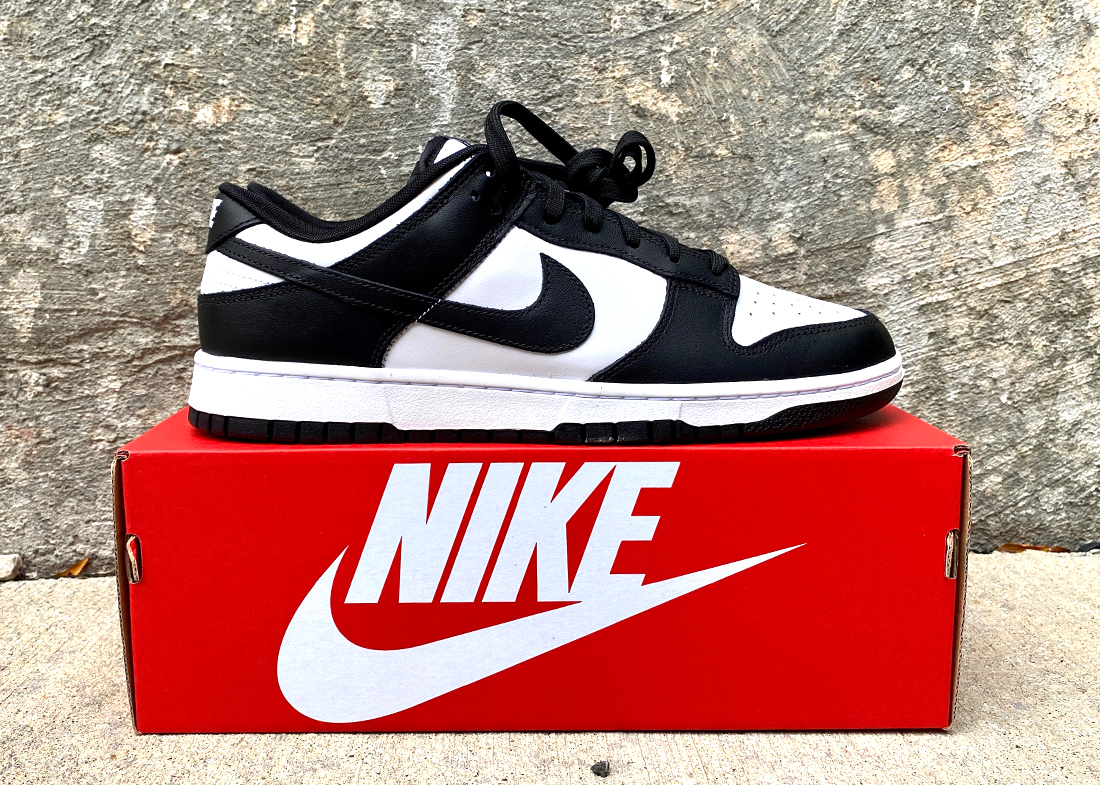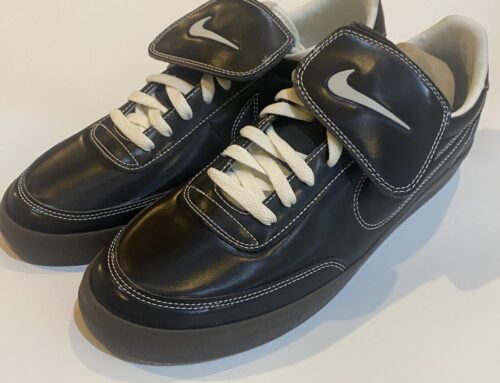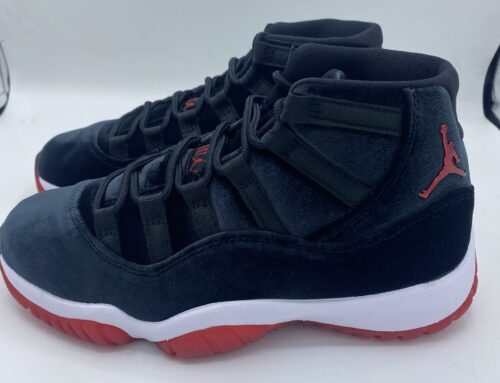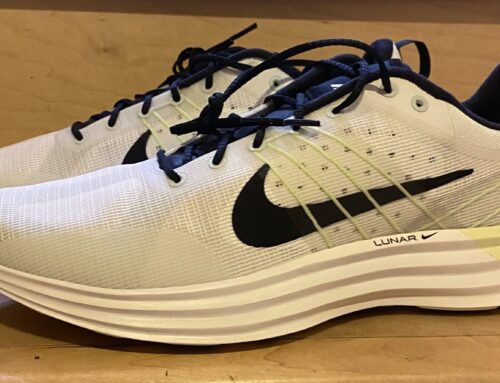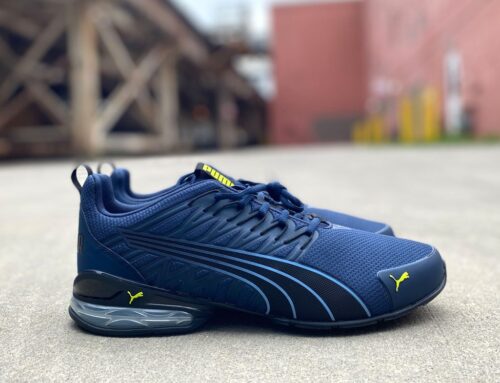One of the most popular sneakers on the market, the Nike Dunk Low is another classic that made its way into our review section this month. We got a pair in black and white(also dubbed “Panda” this fall and we could not miss the chance to check out its features in 2023.
The History of Nike Dunk Low
The Nike Dunk was first released in 1985 in its high top form as a basketball sneaker. It was created by Peter Moore by combining elements from the Air Force 1, the Terminator and the Air Jordan 1. With its color blocked design the sneaker was the perfect model to appeal to college basketball teams and their fans. The campaign “Be True To Your School” was an immense success and the sneaker was instantly popular. That did not last, however, given that the era of Jordans was unfolding so the sneaker went under the radar until it was adopted by the sneaker community due to its low price, stability and durability. In early 2000 the Nike Dunk became the centerpiece of the new SB line from Nike. The Nike Dunk SB was enforced with features that made it even more appealing to the skateboarders, all while keeping its original looks. The SB is a version of this shoe that gave a new life to it and helped keep it relevant over the past two decades. Countless collaborations were released over the time like the ones with Supreme, Zoo York, Stussy and Concepts just to name a few. In 2000 the Travis Scott x Nike SB Dunk Low Cactus was released, launching a new frenzy with another generation of teens. Nike has been keeping the releases pretty limited, making it almost impossible to get a pair at retail prices for a good while.
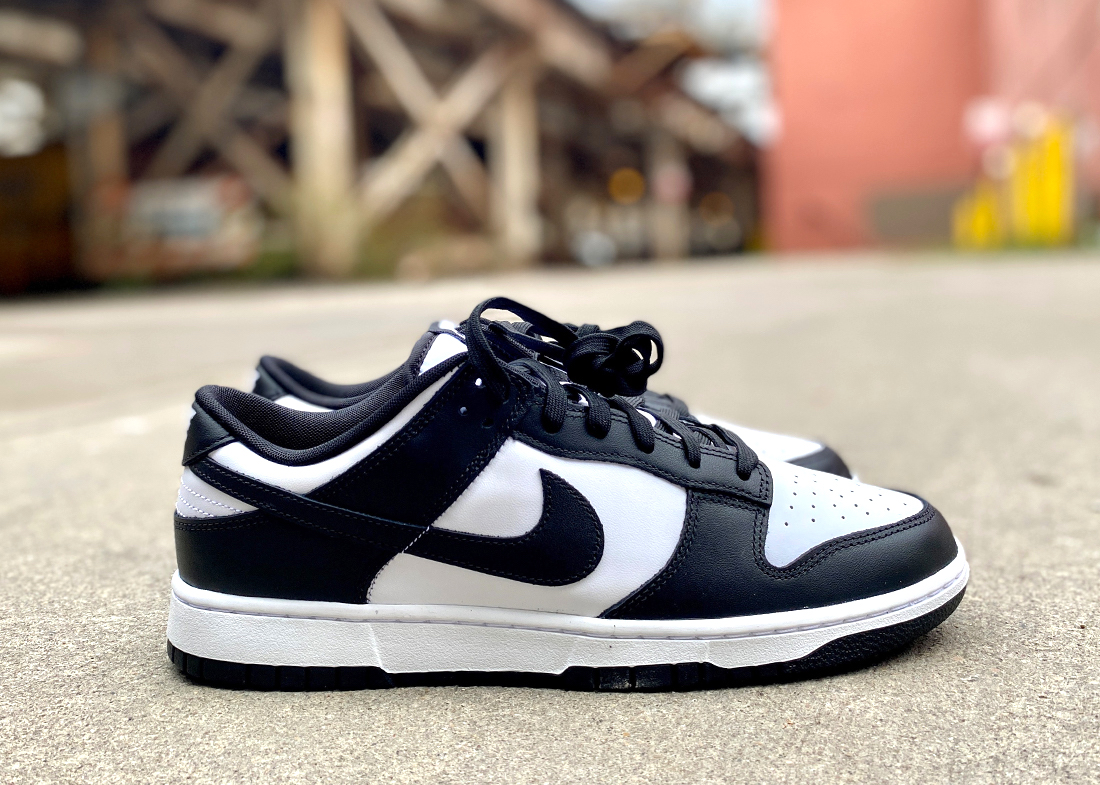
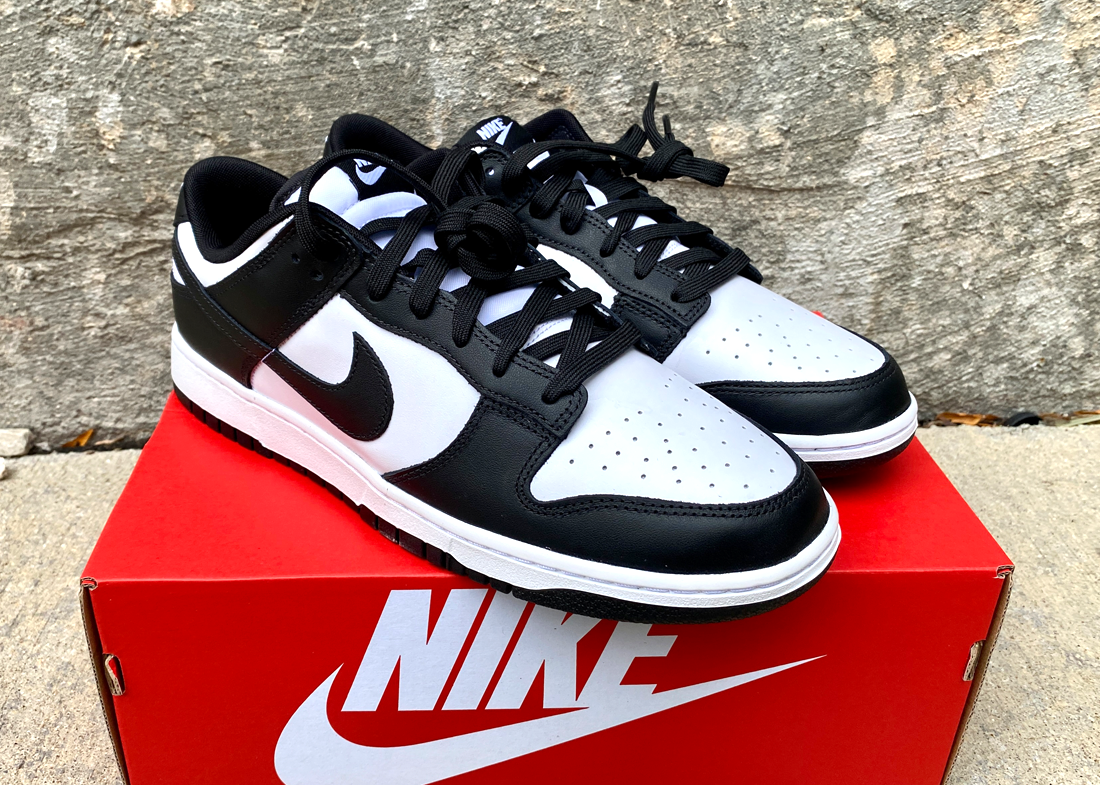
How Do They Fit?
The Nike Dunk Low fit true to size. Given their design with leather upper and a rubber sole they need a bit of break in period. They do not run too narrow so if you have slightly wide feet you can go up a half size and you should be fine. If you need some guidance for sizing with Nike sneakers you can check out this size chart.
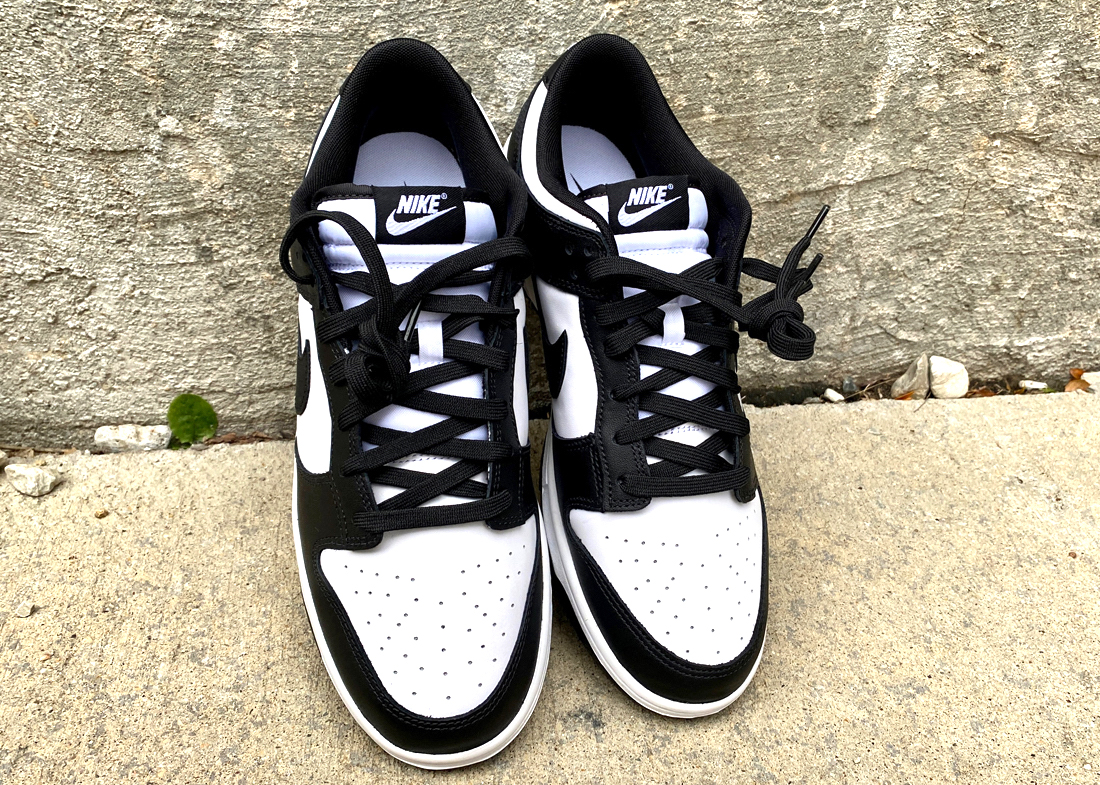
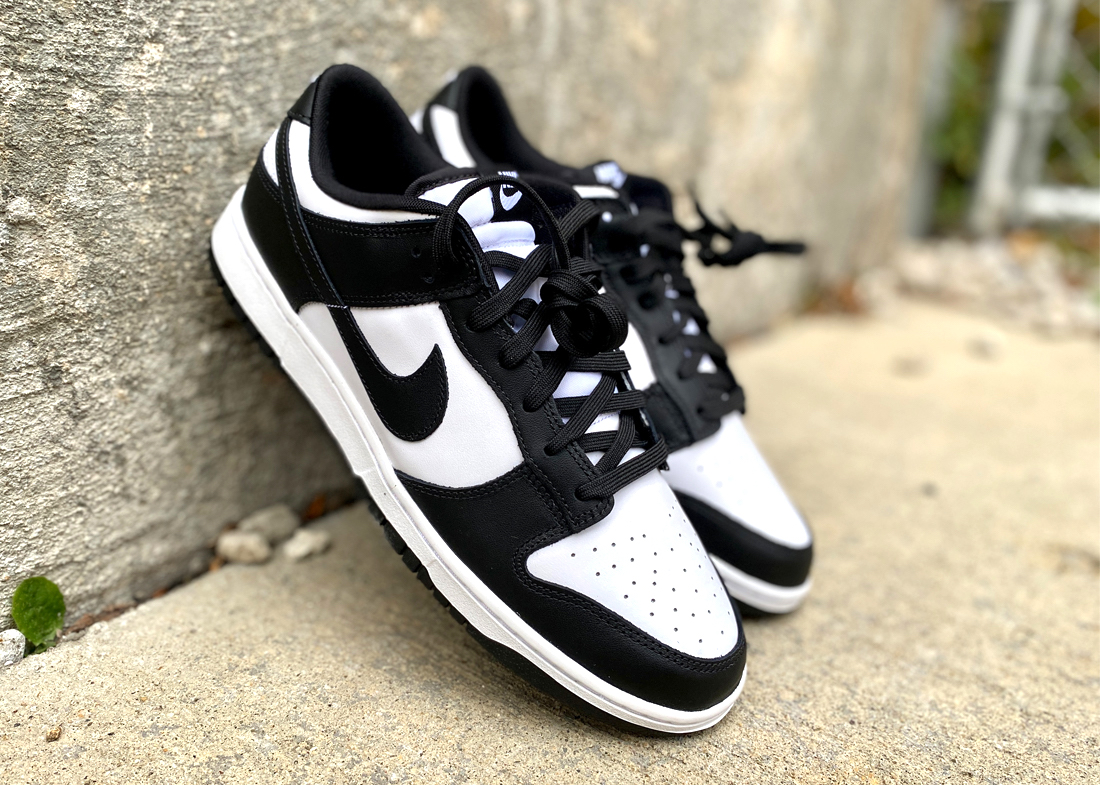
Upper
The upper of the Nike Dunk Low sneaker is typically made of quality leather base with leather or suede overlays. This distinctive paneling design allows for a variety of color blocking options which helped make it such a hit over time with its creative collaborations. These overlays also add to the durability and the lockdown they offer, some of the features that made it so popular with skaters in the late 90’s.The toe box is very similar to the one from the Air Jordan 1 low, being quite roomy and well ventilated for a classic sneaker. The overall comfort is pretty basic, with a lightly padded tongue and heel area.
Sole Unit
The sole unit of the Nike Dunk Low is made of a stitched cupsole midsole, similar to most sneakers of its era. Stitched cupsoles are known for their durability and classic aesthetic, with the EVA insert providing most of the cushioning. Cupsoles wrap the upper material around the midsole and outsole, providing a clean look and additional support. The sole also has a low profile which enhances the shoe stability and close to ground feel. The outsole is made of durable rubber with a pattern identical to the one from the Air Jordan 1, not surprisingly given that they were designed in the same year by Nike.
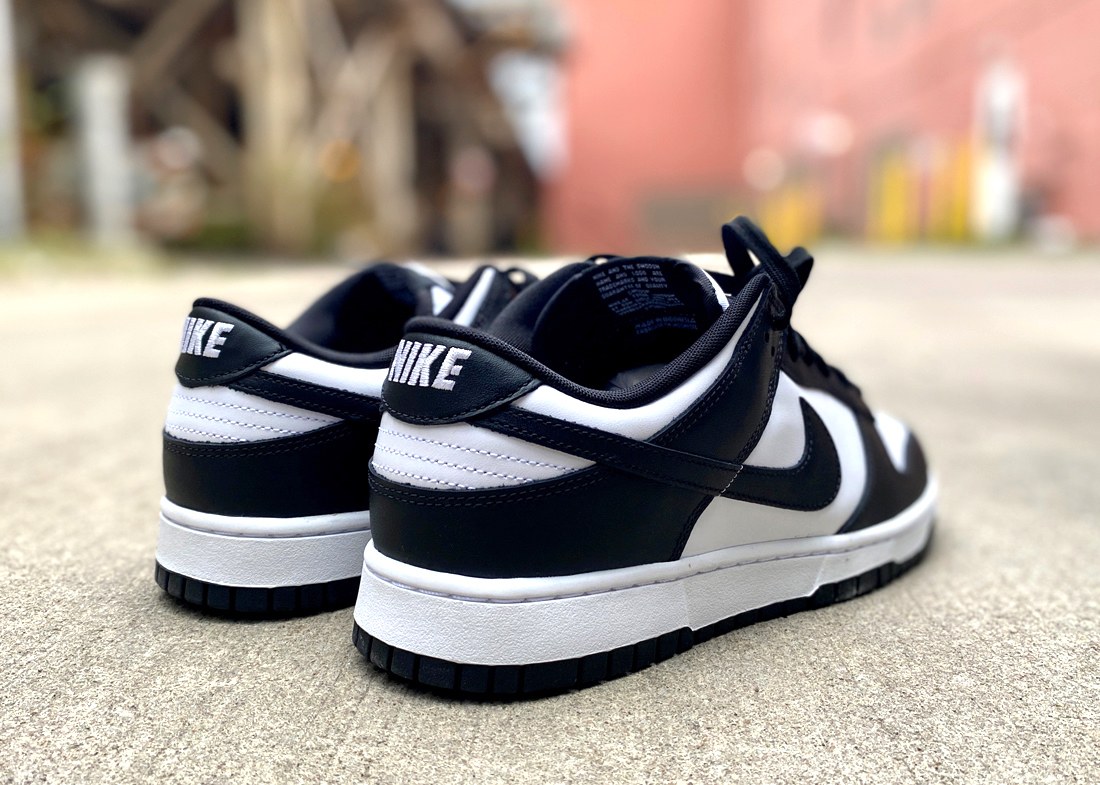
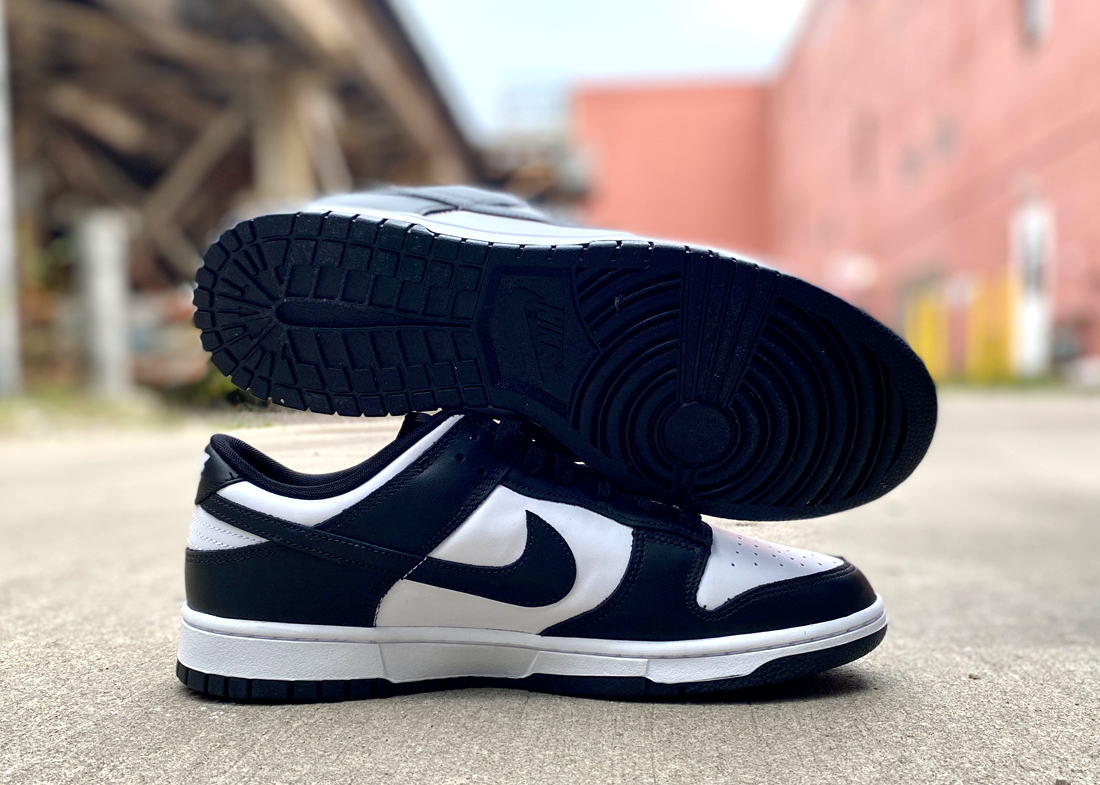
What Are They Best For?
If we leave aside the hype and their collector’s appeal the Nike Dunk Low is still a solid all around option for those looking to sport a casual, retro look. Given the outdated technology (or lack of) they are best for everyday use as a casual sneaker. For my Nike Dunk Low review I tested them a bit in the gym and they can do a good job in lift weighting given the stability and low profile they have to offer. They surely still hold some versatility when it comes to sports, especially basketball and skateboarding.
Why Are Nike Dunks So Expensive?
The main reason why the Nike Dunk Low are so expensive is their scarcity. Back in early 2000’s when Nike was trying to win over the skateboarding community all releases were limited and sometimes only found in certain stores as part of their effort to not be perceived just as a soulless corporation. It was a great move on their part which contributed greatly to the hype around this sneaker and not only. The brand continues to have this strategy for many other models to this day.
Bottom Line
To wrap up this Nike Dunk Low review, these sneakers continue to go strong decades after their release for a good reason. If you are a sneakerhead these are a must have, there are simply too many colorways and special editions that are worth collecting. For the casual buyer the Nike Dunk low is a great retro shoe that is stylish and durable. While they don’t provide much arch support for standing up all day they are a versatile sneaker that is great for teenagers and for those looking for a shoe that can be easily used for occasional athletic activities.
Dunk vs SB Dunk – What is The Difference?
The Nike Dunk and the SB Dunk may share a similar silhouette, but their differences go beyond aesthetics, with key features catering to distinct needs. The most apparent contrast lies in their tongues: the Dunk boasts a slim, mesh tongue, while the SB Dunk’s tongue is notably thicker, providing enhanced cushioning and protection. The added thickness aids in securing a snug fit, adapting to the wearer’s feet and preventing any undesirable slipping. Elastic straps contribute to a secure lockdown, simplifying the on-and-off process without compromising on stability.
In terms of comfort and performance, the Dunk, rooted in basketball heritage, features simple EVA insoles. In contrast, the SB Dunk introduces a thin, encapsulated Zoom Air unit at the heel and Poron foam at the forefoot, offering impact protection and responsive cushioning for skateboarders, while a terry toweling layer wicks away sweat.
Traction, a crucial factor in both sports, sees nuanced improvements in the SB Dunk. The outsole retains the Dunk’s reliable pattern but enhances flexibility around the forefoot by increasing the number of rings, optimizing grip on the skateboard.
Even the laces undergo a transformation, with the SB Dunk adopting round, puffy laces to withstand the rigors of skateboarding, in contrast to the classic Dunk’s flat laces designed for the basketball court. These modifications reflect the thoughtful adaptation of a classic sneaker to the specific demands of skateboarding, showcasing Nike’s commitment to performance and functionality across diverse athletic pursuits.
Nike Dunk Low vs Air Jordan 1 Low
The Nike Dunk Low and the Air Jordan 1 Low share a common ancestry as both were introduced in 1985 and designed by Peter Moore. One notable distinction lies in the design influence and pricing. The Air Jordan 1 was slightly pricier, attributed to Michael Jordan’s involvement in its design. This is reflected in the Air Jordan 1 featuring the iconic Air Jordan logo stitched on the back, a premium touch absent in the Nike Dunk Low.
Examining the outsoles, the Nike Dunk Low showcases a boxy outline, while the Air Jordan 1 boasts a seamlessly smooth shape, emphasizing differing aesthetic preferences. Additional disparities include the Nike Dunk Low’s two extra eyelets for a snug fit in skateboarding, marked by a Nike logo on the back. The Nike Dunk also boasts a thick heel strap extending from the eyelets to the heel’s base, a feature absent in the Air Jordan 1. Further nuances emerge in the toe box, with the Nike Dunk presenting a slightly larger one. Despite these differences, both sneakers share a fundamental similarity, with intricate design details distinguishing them for enthusiasts seeking subtle variations in their footwear.

